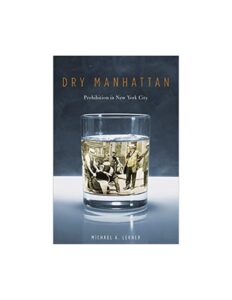Published by Harvard University Press in 2008, historian Michael Lerner's Dry Manhattan is an exhaustive history of prohibition in New York City. Lerner wrote that "It has been argued that Walker's cabaret law was later used to regulate jazz clubs and, in particular , interracial dancing in Harlem clubs, but there is little evidence that this was the case during Walker's administration." Lerner researched the contemporaneous Harlem newspapers and magazines for the Renaissance Era, apparently finding no evidence that at the time the Cabaret Law and in the following years, there was no evidence to support this claim.
“The law was enforced sparingly, and Walker even suspended the curfew on New Year’s Eve, 1926, arguing that he had no desire to be a “spoilsport .” Liquor violations were in fact of little consequence in terms of maintaining a cabaret license. Most clubs that ran afoul of the cabaret law were punished with a paltry twenty -five-dollar fine, and in 1928, seventy-six cabarets had their licenses renewed by the Department of Licenses despite having complaints filed against them with the Police Department. In 1929 only one licensed cabaret in New York had its license revoked for liquor violations , while thirty-two had their licenses suspended, mostly for curfew violations.”
“It has been argued that Walker’s cabaret law was later used to regulate jazz clubs and, in particular , interracial dancing in Harlem clubs, but there is little evidence that this was the case during Walker’s administration. Though Police Commissioner Joseph Warren and other city officials would express concern over racial mixing in nightclubs later during the Prohibition era, the cabaret law was enforced so sporadically and imprecisely under Walker that it served almost no purpose other than to encourage a modicum of self restraint in the nightclub trade. In many regards, the law was Walker’s way of taking back the regulation of city nightlife from the Bureau of Prohibition and allowing the city to set its own priorities rather than follow the federal agenda.”
Lerner, M. A. (2007). Dry Manhattan Prohibition in New York City. Harvard University Press.
